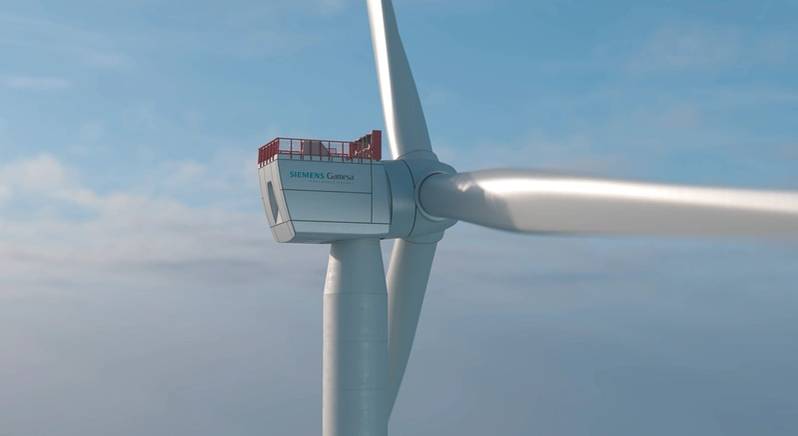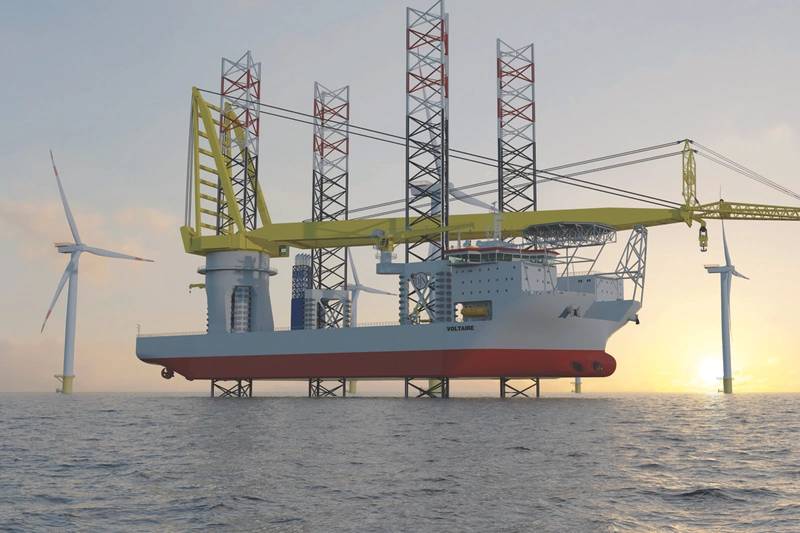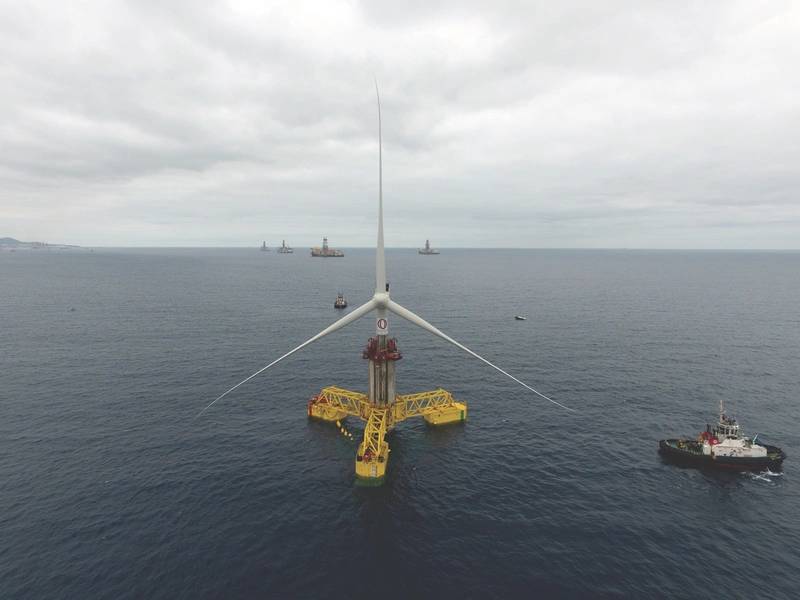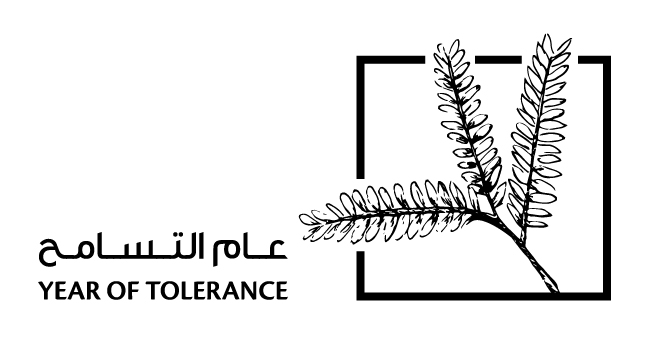
Bigger, Bolder, Heavier
Europe’s offshore wind market is growing faster than anyone expected – not least in terms of the components being installed. Could this mean a challenge for the existing installation fleet?
While offshore wind is seen by many as a maturing market in Europe, with the first subsidy free offshore projects being planned, it’s not without its challenges.
In Europe, there is more than 18 gigawatts (GW) of installed offshore wind capacity. Last year, 2.4GW was added and that’s expected to be how much will be added per year over the next 10 years, according to consultancy and analysts Wood Mackenzie.
The UK, Germany and the Netherlands are the biggest markets, with France now also moving in, with plans to start feeding power into the grid in 2020/2021, and Belgium and Poland eying their potential.
A huge focus has been reducing costs, which has happened – faster than any expected, especially in the last 2-3 years. Indeed, the first zero subsidy bids were made for offshore wind parks in 2017, when Germany’s EnBW and Denmark’s Ørsted made bids for German projects.
“A large part of [the cost reduction] is attributed to a faster design cycle in turbine evolution,” says Shashi Barla, senior analyst at Wood Mackenzie, with turbine manufacturers unveiling new, larger systems faster. “12- to 14-megawatt (MW) turbines could be available in the timeframe of those projects. That could be cost effective and provide power at zero subsidy.” But, a faster design cycle means that the broader industry has to face up to shorter supply cycle, he says.
It’s not that long ago – 2011/2012 – that vessel owners were building assets for an industry building out 6MW turbines. This year, 9.5MW turbines with 164-meter-diameter rotors will be installed at the Northwester 2 offshore wind farm in Belgium. Siemens Gamesa will also be prototyping its 10MW SG 10.0-193 DD turbine, with a 193-meter-diameter rotor, at the Danish National test center for large wind turbines in Oesterild, Denmark. The firm expects the turbine to be commercial by 2022. Meanwhile, GE is working on the Haliade-X, a 12 MW device. “It might not be long to go until a 14 MW is being developed,” says Barla.
 Artist’s impression of the Siemens Gamesa 10MW offshore wind turbine (Image: Siemens Gamesa)
Artist’s impression of the Siemens Gamesa 10MW offshore wind turbine (Image: Siemens Gamesa)
Meanwhile, according to the UK Chamber of Shipping, in 2017, offshore turbines were installed at an average depth of 27.5 meters and located 41 kilometers from the shore on average. Last year, the numbers were more moving into 100-150 kilometers offshore, where bottom-fixed turbines were being installed in 40-50 meters depth.
This puts pressure on installation contractors, and there are questions over whether there is capacity in the market. “If companies are not making investments today in these vessels and other balance of plant equipment, there may be a bottle neck in handling these large turbines and blades,” says Barla. “We’re talking already 100-meter-long-plus blades and heavy components. Some nacelle components you’re talking 800 metric tons. You really need big machines, bigger cranes to handle these.”
Arnstein Eknes, segment director for Offshore Service Vessels in classification society DNV GL, says there are two key dimensions when installing larger turbines; longer blades and heavier nacelles. “Today, we are talking about blades maybe 100-105 meters long. The nacelles are the heaviest component and they need to be lifted 130-140 meters up in to the air, so hoist distance is an issue. We see that the wind farm installation vessels built initially, they are too small today without retrofitting new cranes. Even those built 6-7 years ago are too small and they are retrofitting larger cranes, which is not an easy task. The cranes were maybe designed for 300 to 400 metric tons and now need to be for 700, 800, 900, maybe even 1,000 metric tons. It’s about weight and altitude.”
But, these are not the only issues, he says. These vessels mostly have to jack-up to perform installation operations. “Subsequently, we need to recalculate the strength and whole hoisting system of the jack-up in order to lift these components. So, it’s really not straightforward to retrofit a crane, and it really is a headache for wind turbine installation vessels (WTIV) owners to know how to prepare for what the end customer will do,” – i.e. how large turbines will go.
Indeed, some developers have already been seeking consent to use 20MW turbines on developments in the North Sea, which could see rotor diameters extend to 280 meters. “That’s doubling the weight and capacity of the existing largest wind turbine,” says Eknes.
While this could exert more pressure on the WTIV market, it may also result in fewer turbines being built; with 20MW turbines instead of 10MW units, half the number of turbines would need to be installed to create the same size farm. But, it could also mean added complexity, says Eknes, which might mean there’s a practical limit to the size of turbines that comes before the technical limit. That poses are very difficult investment decision for WTIV operators.
Some are investing
Just four years into entering the offshore wind installation market, Belgian firm Jan de Nul is making a splash with the Voltaire on order from COSCO Shipping Heavy Industry in China. The newbuild, due to be delivered in 2022, will have 3,000-metric-ton lifting capacity, using a Huisman leg encircling crane and lifting capability, up to 270 meters in up to 80 meters water depth. “The Voltaire will be able to install at unrivalled hub-heights up to 165 meters with the standard boom,” says Manager Offshore Renewables at Jan de Nul, Peter De Pooter. “This will allow the installation of the next generation turbines, with blade tips that might end up as high as 270 meters above the sea level.”
The Voltaire comes on top of Jan de Nul’s offshore jack-up installation vessels, Vole au vent, acquired just four years ago, and Taillevent, which are able to install turbines up to 10MW, says the firm. “They can lift all the components up to the actual max hub height of 120 meters,” says Jan de Nul.
“The next generation of turbines 10MW+ will become a challenge for all installation vessels currently available on the market,” De Pooter. “Foundations will be heavier; blades will be longer. The size, weight and heights will limit the quantity of turbines that can be transported per cycle [on board of today’s installation fleet] to one or maximum two. A vessel with the appropriate technical characteristics is the answer to this challenge.”
De Pooter sees a wider market for this vessel. “Offshore wind outside Europe and China is starting to develop,” he says. “Taiwan is working on its first full scale wind farms and Jan De Nul Group is one of the main contractors for the two first engineering, procurement and construction (EPC) contracts: the 120MW Formosa 1 wind farm in 2019 and the 110MW Changhua wind farm in 2020. Both wind farms are currently under construction.”
 Voltaire (Source: Jan De Nul)
Voltaire (Source: Jan De Nul)
UK-based Seajacks has been operating in the offshore wind business since 2006. Since then, it’s built the Kraken, Leviathan, Hydra, Zaratan and, most recently, Scylla jack-ups. Seajacks expects to see the next generation turbines, eg. 12MW and, in number from 2023-25 and it is in discussion with developers over installing 12 or 15MW units with Scylla, which entered service in 2016 and has a 1,500-metric-ton leg-encircling crane and can work in up to 65 meters water depth.
“We think there is still a good number of vessels in the market that can install the larger wind turns, [dependent on site characteristics], when they arrive in the market. However, to install 10-15MW turbines, many of the current units will need to be upgraded and modified in order to stay relevant,” says Max Paterson, commercial manager at Seajacks. “The main issues for older smaller vessels in the market will be hook heights for nacelles and variable deck load, to carry heavier and larger components, and deck space. This means new cranes and leg extensions, etc., and it is likely that these necessary upgrades will have a negative effect on how fast these vessels can install.”
Having said that, Paterson also thinks demand and supply should be well balanced. “The market might become tight in some years, in the peak installation months over summer, if multiple projects are planned over the same time,” he says. Conversely, ensuring vessel utilization is also key for owners, which is why Paterson expects WTIV vessels will need to work around the world in the various new markets, like Asia and the US.
“Larger turbines, e.g. 10-15MW, will mean a smaller number of turbines will be required to reach a wind farm’s generation capacity, likely resulting in fewer utilization days for vessel owners,” Paterson says. “It is already a challenge keeping vessels occupied all year round.”
“We already have an extremely competitive WTIV supply chain,” he adds, “with a lot of cost-effective equipment in the market. Will it make sense to move the turbines weights and dimensions to a level where only two or three vessels are suitable? Only time will tell, but with the ferocious focus on lowering cost, particularly on installation, I am sure developers and turbine manufacturers will be very mindful of supply and demand dynamics in the WTIV market.”
Petter Faye Søyland, Head of Engineering, at Danish firm Fred. Olsen Windcarrier agrees that to move to 10MW+ turbines, many of the older vessels in the fleet will need to be modified to meet requirements on lifting height and capacity. “The majority of the jack-up fleet in the wind industry is capable of 8MW installations, with a few exceptions,” he says.
Fred. Olsen Windcarrier’s fleet is currently suitable to install a selection of 10MW units, he says. “The Brave Tern and the Bold Tern [jack-ups] have been thoroughly upgraded. Both have been subjected to 14-meter leg extensions to manage offshore sites with deeper water and higher survival storms, such as the North Sea basin. Moreover, the cranes’ booms have been upgraded with a 20-meter boom insert, enabling them to install turbines with a higher hub height. Both Brave Tern and Bold Tern have replaced the deck crane to enable lifting of tools and equipment to the transition piece, for faster and more efficient installations. In addition, the vessels have undergone under-deck modifications and strengthening, as well as modifications to the tank arrangement to enhance the probabilistic damage stability; both to enable transport of higher and heavier turbine components.”
 Brave Tern and Bold Tern in port of Esbjerg (Photo: Fred. Olsen Windcarrier)
Brave Tern and Bold Tern in port of Esbjerg (Photo: Fred. Olsen Windcarrier)
Potential for disruption?
Others are looking for alternative engineering methodologies to make offshore installation easier. Last September, Heerema Marine Contractors’ Aegir heavy lift vessel, launched as a kind of ‘Swiss army knife’ for the oil industry during its boom in 2013, installed a new design wind turbine concept, called the Delft Offshore Wind Turbine Concept (DOT), in just one hour, using the first slip joint connection concept in the industry.
The DOT wind turbine had already been installed on a monopile connected by the slip joint and was picked up in a single lift by the Aegir from Sif Rotterdam’s quayside and taken to the installation site, the Eneco Princess Amalia Wind Park. There, it was installed by the Aegir as a floating vessel using dynamic positioning.
The slip joint connection was designed under the Slip Joint Offshore Research project (SJOR), launched by a collaboration between research partners TU Delft, TNO, Van Oord and Sif group, and project stakeholders Eneco and Heerema Marine Contractors in 2016. The concept is based on friction, where the weight ensures a firm and stable connection. This means that installation is done by simply sliding the wind turbine over the monopile without the use of grout or bolts, reducing costs, materials, equipment, personnel and schedule, says Heerema Marine Contractors.
Meanwhile, Spanish firm Esteyco is leading the ELICAN consortium which has designed and installed a 5MW prototype Elisa self-installing telescopic tower concept that would reduce need for installation vessels.
The prototype system was installed in 30 meters water depth in August last year – using WiFi – offshore Gran Canaria, Spain, and started producing power in March. It comprises a self-floating gravity-based structure (GBS) and a self-lifting telescopic tower, both made of concrete, with a 5MW Siemens Gamesa turbine on top. The structure can be fully assembled onshore, including the turbine, and then towed to the installation site where, after ballasting the GBS to the seabed, conventional heavy-lift strand jacks which are reused to lift one tower level after the other, lifting two sections weighing a total 960 metric tons into their final positions. The recoverable jacks that lift each level are supported by the one below, which also guides the hoisted tube as it rises, in a self-installing procedure in which the tower itself is the only supporting structure required. All works are carried out from a single access platform, which is removed once the turbine is installed.
The consortium – comprising Esteyco, Siemens Gamesa, Ale Heavylift, Dewi GmbH and PLOCAN (the Oceanic Platform of the Canary Islands) – claims this method could reduce installation costs by more than 35% when compared to jackets or XXL monopiles in deeper water (35 meters plus). The project partners also say the design is scalable and would be “a readily available means” to install new 12MW turbines.
 Esteyo’s ELICAN concept (Photo: ALE)
Esteyo’s ELICAN concept (Photo: ALE)
Room for improvement
The first offshore wind project was built in 1991, at Vindby, Denmark (and is now decommissioned), and there’s now more than 18GW of offshore wind capacity. “But, to put that in perspective, the global onshore wind capacity is about 600GW,” says Barla. “So, from a volume perspective, offshore still has the biggest room for improvement.” This could be in policy, process, technology and then supply chain, he says.
In terms of technology, there’s a move toward use of carbon fiber in blades. “Historically, manufacturers have been reluctant to make investment into sourcing carbon fiber because it’s expensive, and with very few supplying it, controlling the supply chain can be challenging,” Barla says. “If you look at the biggest players, Siemens Gamesa, all their offshore turbines have been glass fiber. Now, they’ve announced the 8MW DD167, a prototype of which was installed a few months ago, and the 10MW DD193, both of which incorporate carbon fiber. There’s been a paradigm shift in the largest players in the industry.”
“In terms of processes, we are still not there yet,” he adds. “It you talk about the automotive industry, with assembly lines and efficiency, they are far ahead, but they’re a 120-year-old industry. Offshore started many years ago, but the real commercial projects only started in the last seven years. There is still a huge learning curve, Europe and globally.”
But, while there’s room for improvement, the lessons already learned in Europe can be replicated now in newer markets – such as in the US and Asia – to help them scale up faster.

